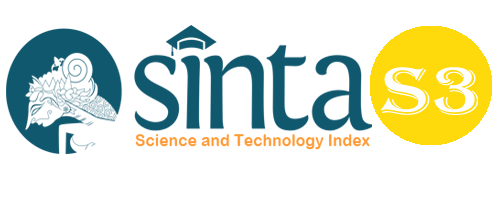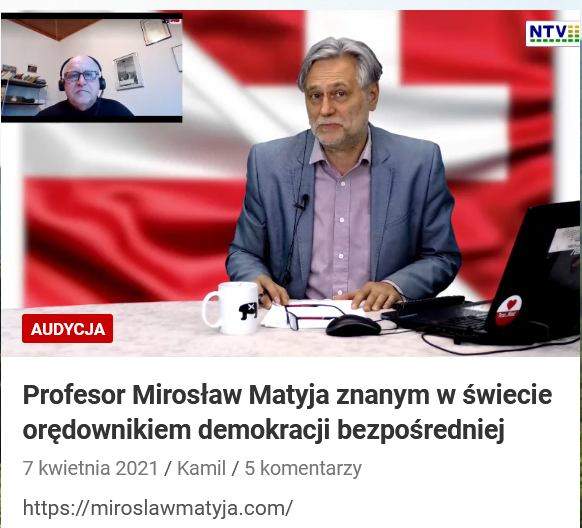Mapping Over-indebtedness of Microfinance Clients in Indonesia and Tanzania: The Importance of Analysing Microfinance beyond its Outreach and Sustainability
Abstract
This paper attempts to describe the importance of mapping the over-indebtedness of microfinance clients. While most research into the field of microfinance confirms its role in alleviating poverty through its outreach, little research has been done to evaluate its sustainability. More so, the analysis of microfinance clients regarding their over-indebtedness is still limited, although it could assist microfinance institutions (MFI’s) in acquiring specific information concerning the profile of their clients. Using a qualitative approach, through a literature study of recent evaluations of microfinance lending schemes, in combination with primary data collected by the authors with the context of global south-south dialogue between Indonesia and Tanzania, this paper highlights the importance of mapping microfinance clients regarding their condition of over-indebtedness. It also suggests policy makers to anticipate the causes of over-indebtedness of clients in designing and applying policies to avoid the failure of microfinance in alleviating poverty and sustain its support of micro- or small-scale enterprises.
Full Text:
PDFReferences
Al-Mamun, C. A., Hasan, N. & Rana, A. (2013). Microcredit and Poverty Alleviation: The Case of Bangladesh. World Journal of Social Sciences, 3(1)102–108. https://www.researchgate.net/publication/ 306323524
Andrew, D., George, J., Helgesson Sekei, L., Rippey, P. (2018) Insights on the Preferences and Usage of Financial Services by Savings Groups in Tanzania, FSD Tanzania & Oxford Policy Management.
Borbora, S., Sarma, G.K. (2011). Microfinance Institutions: Sustainability and Outreach. Conference Paper, September 2011. URL: https://www.researchgate.net/publication/234001987
Brown A., Mackie P., Smith A., Msoka C. et al. (2015) Financial Inclusion and Microfinance in Tanzania, Informal Economy Research Observatory Cardiff University & Institute of Development Studies, University of Dar es Salaam.
Business Insider. (2012). Hunderds Of Suicides In India Linked to Microfinance Organisations. URL: http://www.businessinsider.com/hundreds-of-suicides-in-india-linked-to-microfinance-organizations-2012-2?international=true&r=US&IR=T
Diagne, A., & Zeller, M. (2001). Access to credit and its impact on welfare in Malawi. International Food Policy Research Institute. Research Report 116. Washington, D.C. URL: http://www.ifpri.org/sites/default/files/publications/rr116.pdf
Duvendack, M., Palmer-Jones, R., Copestake, J. G., Hooper, L., Loke, Y. & Rao, N. (2011). What is the Evidence of the Impact of Microfinance on the Well-Being of Poor People? Systematic Review. London: EPPI-Centre, Social Science Research Unit, Institute of Education, University of London.
Ericksen, J., Ericksen, E., S, Graham. (2014). Over-indebtedness in Mexico: Giving Borrowers a Voice. URL: https://www.finca.org/wp-content/blogs.dir/1/files/2014/02/Over-indebtedness-in-Mexico.pdf
European Commision (2013) Over-indebtedness of European households: updated mapping of the situation, nature and causes, effects and initiatives for alleviating its impact. European Commission: Directorate General Health and Consumers.
Finlay, S.M. (2006). Predictive Models of Expenditure and Over-Indebtedness for Assessing the Affordability of New Consumer Credit Applications. The Journal of the Operational Research Society, Vol. 57, No. 6 (Jun., 2006), pp. 655-669
Gaiha, R., Kularni, V.S. (2013). Credit, Microfinance and Empowerment. Expert Group Meeting: Policies and Strategies to Promote Empowerment of People in Achieving Poverty Eradication, Social Integration and Full Employment and Decent Work for All, 10 -11 September 2013, United Nations Secretariat Building, New York.
Hulme, D. & Mosley, P. (1996). Finance Against Poverty (Vol I & II). London: Routledge.
Internal Source of Reports (2017). Various Reports from the Bandung Municipality and Several Sources of Reports of Research with Bank of Indonesia.
Johnson, S., Rogaly, B. (1997). Microfinance and Poverty Reduction: Oxfam Development Guideliness, Oxfam and ActionAid: London.
Joyce, L., Akarro R.J.J., (2016) Some Factors Associated with Operations of Village Community Banks (VICOBAs) for Poverty Alleviation in Tanzania: A Case of Ilala District, Tanzania, Int. Journal of Management and Economics Invention, Volume 2, Issue 09, P. 748-758, ISSN(e): 2395-7220
Kappel, V., Krauss, A., Lontzek, L. (2010). Over-Indebtedness and Microfinance: Constructing an Early Warning Index. Responsability Investments for Prosperity, University of Zurich. URL: http://www1.emarsys.net/custloads/115742480/md_106808.pdf
Khanam, D., Mohiuddin, M., Hoque, A., Weber, O. (2018). Financing micro-entrepreneurs for poverty alleviation: a performance analysis of microfinance services offered by BRAC, ASA, and Proshika from Bangladesh. Journal of Global Entrepreneurship Research (2018) 8:27. URL: https://journal-jger.springeropen.com/articles/10.1186/s40497-018-0114-6
Ledgerwood, J. (1998). Microfinance Handbook: An Institutional and Financial Perspective. Washington, D.C: World Bank.
Magali, J. (2018) Comparative Analysis of Strengths and Challenges of SACCOS, VICOBA, NGO MFIs and Mobile Money Transactions in Tanzania, Int. Journal of Management Sciences and Business Research, May 2018 ISSN 2226-8235 Volume 7, Issue 5.
Magdalena, S., Suhatman, R. (2020). The Effect of Government Expenditures, Domestic Invesment, Foreign Invesment to the Economic Growth of Primary Sector in Central Kalimantan. Budapest International Research and Critics Institute-Journal (BIRCI-Journal). Volume 3, No 3, Page: 1692-1703.
Morduch, J., Haley, B. (2002). Analysis of the Effects of Microfinance on Poverty Reduction. NYU Wagner Working Paper No. 1014 Issued June 28, 2002.
Muganda, M.F. (2016) Group Formalisation Into VICOBA model: A Case of Kimara Women EmpowermentGroup In Kimara Ward, Dar Es Salaam, Master Dissertation, Open University of Tanzania
Obaidullah, M. (2008). The Role of Microfinance in Poverty Alleviation: Lessons from Experiences in Selected IDB Members Countries. 1st ed. Islamic Research & Training Institute of the Islamic Development Bank (IRTI-IDB). http://www.isdb.org
Okumu, L. J. (2007). The Microfinance Industry in Uganda: Sustainability, Outreach, and Regulation. PhD Thesis, University of Stellenbosch, 2007. URL: https://scholar.sun.ac.za/handle/10019.1/1091
Ollotu, A. A. (2017) Contribution of Village Community Banks (VICOBA) to Economic Development of Women in Tanzania: A Case of Dodoma Residents, MBA Dissertation, University of Dodoma
Perkumpulan Akses Keuangan Indonesia (PAKINDO). (2016). Indonesia Over-Indebtedness Study: Why Why Do Microfinance Clients Take Multiple Loans? URL: http://pakindo.org/pakindo1.pdf
Pollinger, J.J., Outhwaite, J. Guzmán, H.C. (2007). The Question of Sustainability for Microfinance Institutions . Journal of Small Business Management, 45(1), pp. 23–41
Rhyne, E. (1998). The Yin and Yang of Microfinance: Reaching the Poor and Sustainability. Micro Banking Bulletin.
Schicks, J. (2012). Over-Indebtedness in Microfinance – Who Should Bear the Risk? CGAP Blog Series. 11 June 2012. URL: https://www.cgap.org/blog/over-indebtedness-microfinance-who-should-bear-risk
Schreiner, M. (2002). Evaluation and Microenterprise Programs in the United States. Journal of Microfinance/ESR Review. Vol 4: Issue 2, Article 5. URL: https://scholarsarchive.byu.edu/ esr/vol4/iss2/5/
SEDIT (2010). Structure Principle and Operation System of VICOBA Lending Scheme, (Social Economic Development Initiative of Tanzania) http://www.seditvicoba.or.tz accessed Sept. 2016
Shah, M. M., et al. (2020). The Development Impact of PT. Medco E & P Malaka on Economic Aspects in East Aceh Regency. Budapest International Research and Critics Institute-Journal (BIRCI-Journal). Volume 3, No 1, Page: 276-286
Simtowe, F., Zeller, M. (2006). Determinants of Moral Hazard in Microfinance: Empirical Evidence from Joint Liability Lending Programs in Malawi. MPRA Paper No. 461. URL: https://mpra.ub.uni-muenchen.de/461/1/MPRA_paper_461.pdf
Slikkerveer, L. J. (2007). Integrated Microfinance Management and Health Communication in Indonesia. Cleveringa Lecture Jakarta. Trisakti School of Management & Sekar Manggis Foundation. Leiden: LEAD, Leiden University.
Slikkerveer, L. J. (ed) (2012). Handbook for Lecturers and Tutors of the New Master Course on Integrated Microfinance Management for Poverty Reduction and Sustainable Development in Indonesia (IMM). Leiden/Bandung: LEAD-UL/FEB-UNPAD.
UN Economic and Social Commission for Asia and the Pacific (UNESCAP). (2006). Microfinance for Poverty Reduction: building inclusive financial sectors in Asia and the Pacific: development papers No. 27, UN Economic and Social Commission for Asia and the Pacific: New York.
UNDP (2017) Tanzania Human Development Report 2017: Social Policy in the Context of Economic Transformation, United Nations & Economic and Social Research Foundation, Dar Es Salaam
Woodley, E., Crowley, E., Pryck, J. D. de & Carmen, A. (2006). Cultural Indicators of Indigenous Peoples’ Food and Agro-Ecological Systems. SARD Initiatives. Paper on the 2nd Global Consultation on the Right to Food and Food Security for Indigenous Peoples. Nicaragua. 7-9 September 2006.
Yunus, M. (1999). Banker to the Poor: Micro-Lending and the Battle Against World Poverty. New York: Public Affairs.
Zhang, N., Wong, P. (2014). Sustainable microfinance in Asia: Landscapes, challenges and strategies. California: Milken Institute. http://www.milkeninstitute.org/pdf/sustainablemicro financeinasia.pdf
DOI: https://doi.org/10.33258/birci.v5i1.4202
Article Metrics
Abstract view : 87 timesPDF - 55 times
Refbacks
- There are currently no refbacks.

This work is licensed under a Creative Commons Attribution-ShareAlike 4.0 International License.

This work is licensed under a Creative Commons Attribution-ShareAlike 4.0 International License.

_.gif)

















_.gif)



